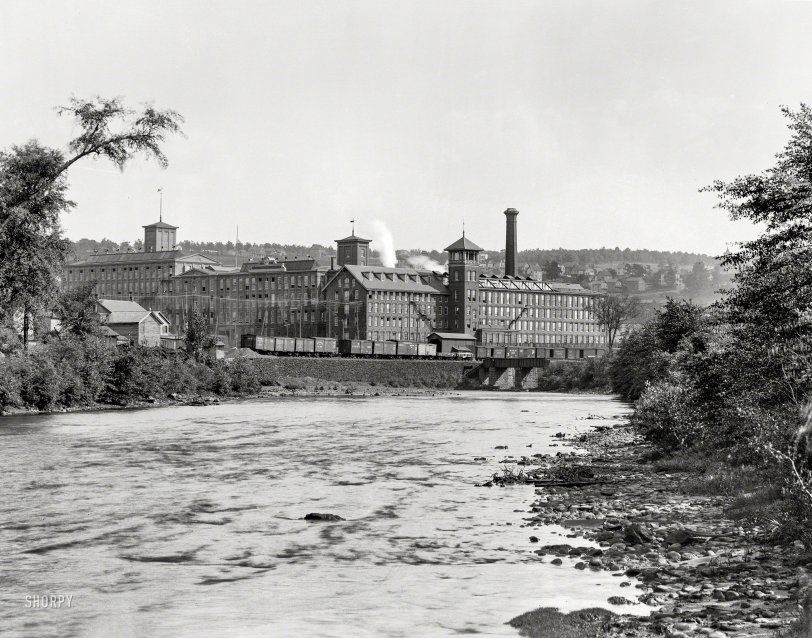


Framed or unframed, desk size to sofa size, printed by us in Arizona and Alabama since 2007. Explore now.
Shorpy is funded by you. Patreon contributors get an ad-free experience.
Learn more.

- S&P
- 1940 Zenith radio model 6G601
- Quality goes in before the name goes on!
- Snazzy skirt
- Carbon Arc Lamps
- Illuminate us
- I remember it well
- I can't prove it
- Complicated then, forgotten now
- Bryan-Stevenson
- Skinny is as skinny does
- How do you rest in peace
- Riding the footboards
- Alas, hidden from view
- Baldwin Diesels
- Exclusive pump
- Bananas, Oysters and Smokey Joe
- Details, Details
- What's that building to the left of the tower?
- Coal Barges
- Bromo-Seltzer
- Inner harbor
- The Basin
- What a headache!
- Giant stepladder?
- Yeah, it was cold
- Love those coats
- Link & Pin Days Remnant
- Baldwin 62303
- Baldwin VO-1000
Print Emporium
Silk Railroad: 1900

Circa 1900. "Sauquoit silk mill on Susquehanna River at Scranton, Pennsylvania." 8x10 inch dry plate glass negative, Detroit Publishing Company. View full size.
Silk trains
This is the first photo I've seen for a destination for silk trains. The boxcars shown would be for finished silk. Incoming raw material from the Orient was shipped in baggage cars, with guards.
Raw silk, and silk cocoons, was prime business for railroads from the turn of the century into the '30's when airlines stole the business. The product was somewhat perishable, which by itself made it time sensitive, but was also extremely valuable and shipped at very high insurance premiums. The less time on any particular railroad, the more profitable it was because of lower insurance cost.
EVERYTING, including each railroads "crack" passenger trains got out of the way of a silk train. Section crews would "spike" switches ahead of a silk train to make the track more secure. Crews were handpicked.
A ship coming into a west coast port would immediately trans load into baggage cars, and the doors nailed shut. All of the northern transcontinental railroads, and Canadian railroads vied for this business.
My, How You Have Grown!
What a difference a few years can make! Article from The Scranton Republican Tuesday, December 8, 1891.
string of boxcars
Delaware Lackawanna & Western, Central Railroad of NJ and Lehigh Valley predominate, with one from Lake Shore & Michigan Southern, another from Delaware & Hudson, and the light-colored one whose identity I can't make out (possibly New York Central & Hudson River, they had light grey cars.) Note how the cars have a variety of heights, even those from the same railroad. (The 3 CNJ cars are easy to spot with their 'bullseye' herald.)
And if I'm not mistaken, the left-most car is pushed up onto the mound of dirt that is the end-of-track bumper.
Not the Susquehanna
Pretty sure DPC mislabeled the image. This mill seems to have been along the Lackawanna (the Susquehanna doesn't go by Scranton). The mill was at the end of Fig Street in Scranton. The mill can seen in 1992 aerial photographs but is gone a few years later.
https://goo.gl/maps/riQqYnEDjV52

























On Shorpy:
Today’s Top 5